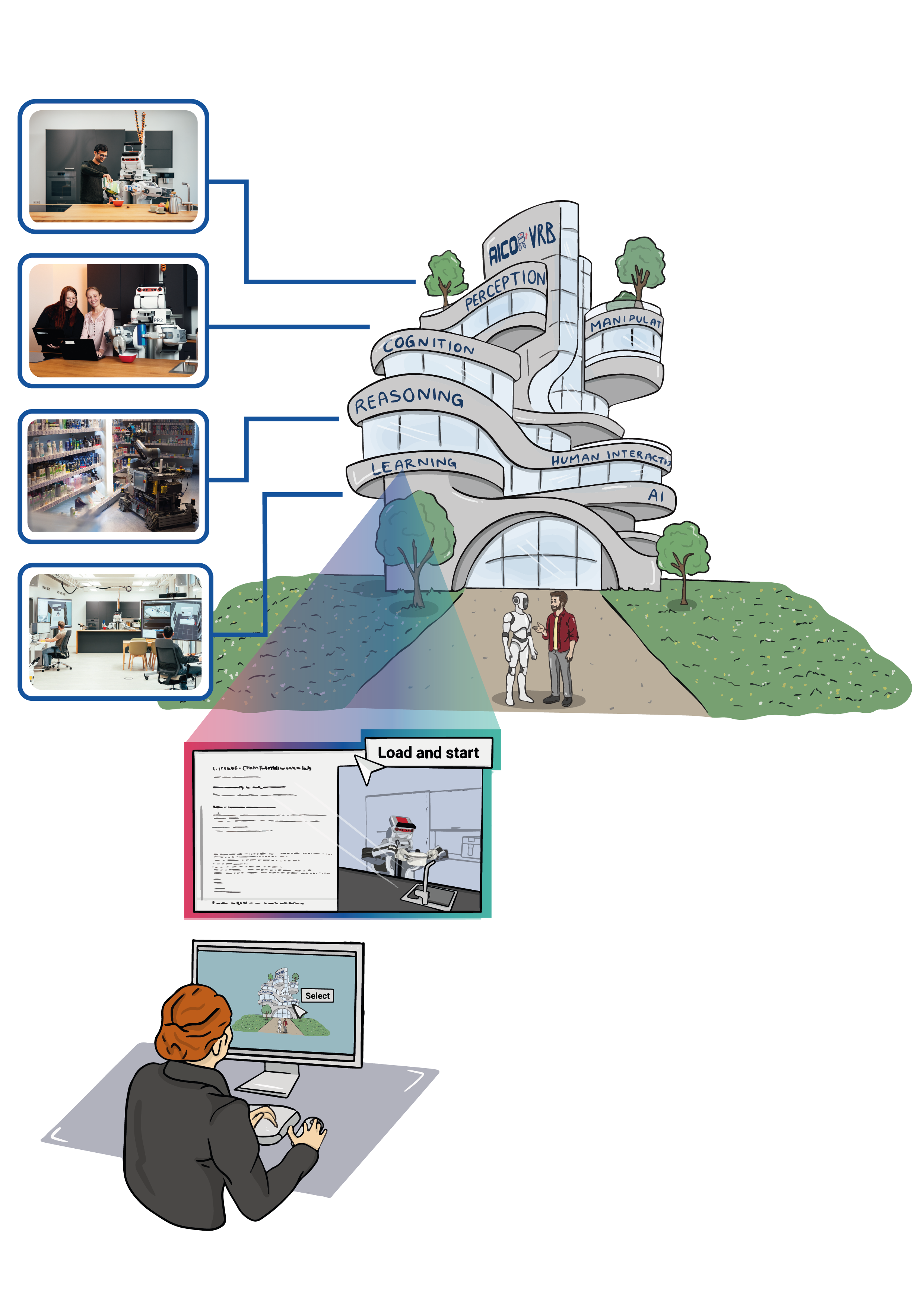The PyCRAM Laboratory focuses on leveraging the capabilities of PyCRAM, a Python 3 re-implementation of the original CRAM framework designed to serve as a comprehensive toolbox for the creation, implementation, and deployment of AI-driven and cognition-enabled control software on autonomous robots. This laboratory is dedicated to advancing the frontiers of robot autonomy by providing a modern and accessible platform that supports the development of sophisticated robot control systems, fostering innovation in the design of intelligent and autonomous robotic solutions.
The framework provides various tools for aiding in robot software development as well as geometric reasoning and a fast simulation mechanisms to develop cognition-enabled control programs that achieve high levels of robot autonomy. Other features that PyCRAM provides are: a high-level abstraction mechanism, a plan language to structure the execution of plans, mechanisms for robot independent code, a variety of interfaces to control a real robot, etc.
Interactive Actions and/or Examples
If you want to see how PyCRAM is used you can take a look at examples of different mechanisms here.
To try out the examples yourself you need to install PyCRAM, afterwards you can install and start Jupyter and try the examples.
Documentation
The general documentation of PyCRAM is in readthedocs here and the API documentation with more technical and detailed information can be found here.
Screenshots
A Pr2 robot executing a simple plan.

A distribution where the robot can be placed without colliding with the environment.

A task tree of a simple pick and place plan





